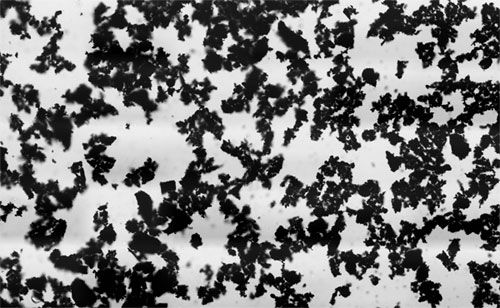Which Filtration Material Leads to the Best Drinking Water?

Clean water is an essential part of life. Just think about how often you use water every day—for cooking, drinking, washing your clothes and dishes, brushing your teeth, or showering. You wouldn't want to do this with dirty water, right? Filtration is one important step in water cleanup. During the filtration process, particles or impurities such as chemicals and bacteria are separated from the solution that is filtered. The method of separation can be mechanical, physical, chemical or even biological. To find out how water filters work, it is probably best to have a look inside the filter. Most of the filters that are used for home water treatment are carbon filters. That means the material inside the filter is carbon or a special form of it, called activated carbon or activated charcoal, which is shown in Figure 1.

What makes activated carbon special is that it is a very porous form of carbon—almost like a sponge. It has many tiny microscopic pores that can soak up water or gases. Also, the surface of activated charcoal is not smooth—if you look under the microscope you see that the particles have a very crumbly shape as shown in Figure 2. All these little micropores, together with its rough surface, create a huge surface area for each particle. About five teaspoons (10 grams) of granular activated carbon has a surface area that is approximately the area of a football field!

his massive surface area gives activated carbon unique properties. When water or liquid travels through the porous structure of the filter, impurities (such as small amounts of chemicals or metals) can be removed by a process called adsorption. Adsorption occurs when compounds physically or chemically adhere to the carbon surface. Physical or chemical trapping happens due to van der Waals forces, weak forces that exist between molecules or particles that can be attractive or repulsive, as well as to chemical bonding on the carbon surface. This is why the surface area, or the surface area to volume ratio, of the activated carbon matters. The more surface area (area exposed to the surroundings), the more possible bonding sites there are for contaminants. If all the bonding sites are taken up, then the impurities remain in the water and it is time to replace your water filter.
Activated charcoal can come in many forms and particle sizes (some of them are shown in Figure 1). The two types you will be using in this experiment are the granular and powder forms. Granular carbon can be compared to small pebbles, while powdered carbon can be compared to fine sand. Looking at Figure 3, you can think of the left cube as the granulated carbon and the smaller cubes as the powdered carbon. They both have the same volume (a total of 8 small cubes), but the surface area exposed to the surrounding is much larger with the 8 individual cubes compared to the one large cube. Therefore, the granular form has a smaller surface area to volume ratio than the powder form.



